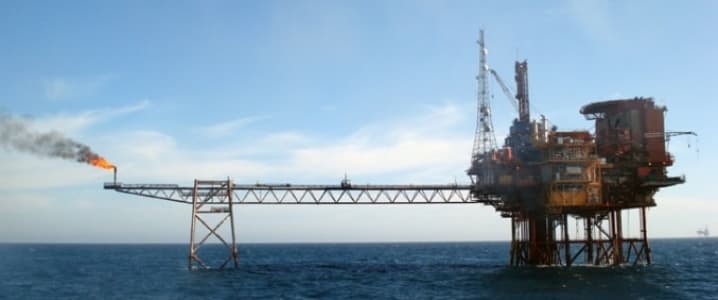Crude prices are selling off, aided by Saudi comments that a decision will not be forthcoming from next week's OPEC meeting in Algiers. Add to this news that the Federal Reserve is looking to restrict bank involvement in physical commodities...and dollar strength as the cherry on top...and oil is heading lower into the weekend. Hark, here are five things to consider in oil markets today:
1) As OPEC / key producer shenanigans remain front and center, we are potentially seeing a new trend emerging: the current kings of overproduction (Saudi, Iran and Iraq) versus the pretenders to the throne (Libya, Nigeria and Russia).
In a twist not too dissimilar to what happened ahead of the Doha meeting earlier in the year, Saudi has said it is willing to make concessions in terms of its oil production, if Iran is willing to participate too (while knowing all too well that Iran is unlikely to agree). Saudi has actually gone a step further this time, saying it is willing to cut production (as opposed to a freeze) if Iran is willing to hold its production at 3.6mn bpd. It appears Iran has reacted how Saudi had hoped, by politely declining.
It's always fun to revisit the chart below; it is incredible how much export loadings are up year-on-year for Saudi, Iraq and Iran:
(Click to enlarge)
All the while, loadings in recent days at Ras Lanuf is buoying optimism of returning Libyan exports (let's not get too ahead of ourselves here, folks) while an absence of any militant activity in Nigeria could mean an additional 300,000 bpd this month from West Africa's largest oil exporter. Finally, Russia is reaching for the stars with its production rates.
As the chart below illustrates, the potential increase in supply from these three pretenders this month adds up to a gargantuan 800,000 bpd...if they can maintain output at current levels:
(Click to enlarge)
2) Due to a change in methodology this week by EIA, total exports of crude and refined products rose 36 percent to a record 5.74 million barrels per day. EIA reported that propane alone rose 651,000 bpd to 1.075mn bpd.
We here at ClipperData are tracking all LPG cargoes leaving the U.S. Our ClipperData show that even including butane, isobutane, and ethane to propane, total U.S. exports last week were still below that of EIA's estimate, coming in below 1mn bpd. This is despite LPG exports out of the U.S. Gulf being up 43 percent on the prior week. In addition, LPG loadings on the East Coast reached a record, with loadings at Sunoco's Marcus Hook terminal including a VLGC of propane, as well as two ethane cargoes - all heading to Europe.
3) Yesterday we discussed how Saudi Arabia's oil demand has been contracting for much of this year, now down to a six-year low, while IEA expects it to come in lower over the entire year. This drop in demand is being driven by spending cuts and belt-tightening - from both the government and its people.
The economy only grew by 1.5 percent YoY in Q1, while contraction could be on the cards for Q2. The removal of subsidies by the government on such items as water and electricity is taking a bite out of consumer spending, while rising inflation is also exacerbating the situation; it has more than doubled from last year to 4 percent. Related: Is This The End Of The Road For Indonesian Oil?
Currently two thirds of Saudi workers are employed by government-related entities. The government is further looking to cut costs, cutting one-fifth of its civil service, while targeting a reduction in public wages to 40 percent of its budget; currently it is 45 percent.

4) The rocky road to recovery in the oil industry is starkly illustrated in the following two examples. While oil major Total just announced that it is increasing its cost cutting by $1 billion by 2018, and by a further $2 billion by 2020, the biggest player in the Permian Basin, Pioneer Natural Resources, expects 100 rigs to be added in the most prolific U.S. shale play over the next year. Related: Why Iraq’s Oil Production Has Reached It Limits
Permian rigs have already rebounded strongly from their lows earlier in the year, bouncing 50 percent from their lows, and significantly outpacing the rebound seen from total U.S. oil rigs.
(Click to enlarge)
5) Finally, poor old steelmakers in Blighty are blighted by the high cost of electricity. While China continues to ramp up its steel exports, British steelmakers are unable to be competitive on a global stage given the high input costs involved.
(Click to enlarge)
By Matt Smith
More Top Reads From Oilprice.com:
- The Start Of Something Big? Iran Changes Oil Contracts
- Russia And Saudi Arabia Playing A Risky Game Ahead Of OPEC’s Meeting
- Why Oil Prices Can’t Stay Low For Much Longer






















